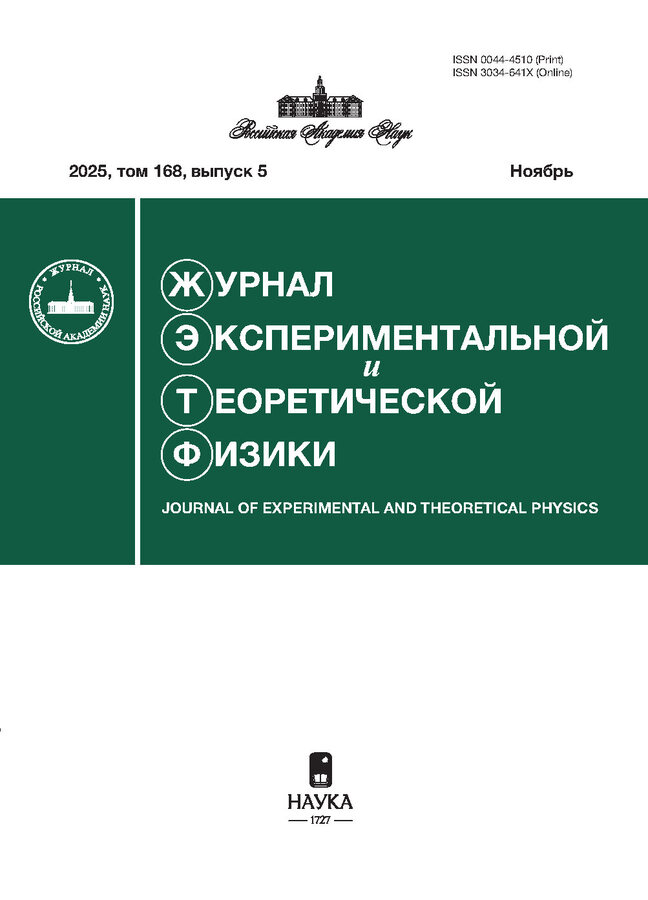Spin Glass Model for GaAs/AlGaAs Quantum Wells Doped by Nonmagnetic Impurities near the Metal-Insulator Transition
- Authors: Agrinskaya N.V.1, Kozub V.I.1
-
Affiliations:
- A.F. Ioffe Institute, Russian Academy of Sciences
- Issue: Vol 164, No 5 (2023)
- Pages: 797-804
- Section: Articles
- URL: https://journals.rcsi.science/0044-4510/article/view/247341
- DOI: https://doi.org/10.31857/S004445102311010X
- EDN: https://elibrary.ru/PKCREZ
- ID: 247341
Cite item
Full Text
Abstract
In a previous report, we presented experiments which suggested that ferromagnetic ordering of the spins of localized holes in GaAs/AlGaAs quantum wells could be observed when doped with shallow (Be) acceptors at impurity concentrations near the metal-insulator transition. The compensating impurity (Si) was introduced into a narrow region at the center of the barriers [4]. In this paper, we present results from magnetotransport experiments performed on similar structures, but without the compensating impurity (Si). In these samples, the compensation degree is expected to be controlled by the background defects located at the edges of the quantum wells and within the barriers. At low temperatures T ≤ 10 K, we observed isotropic, linear magnetoresistance, anomalous behavior of the Hall effect as a function of the magnetic field, and slow relaxation of resistance after the application of a magnetic field. We explain this anomalous magnetotransport as the manifestation of a ferromagnetic transition or spin glass, originating from indirect spin exchange between localized holes on impurities near the metal-insulator transition. However, we note that perfect disorder, including signs of interspin interactions, leads to unstable configurations. In what follows, we present a model in which we start with this perfect disorder, but apply a procedure to obtain a stable configuration. We show that the resulting spin structure, a “closely packed” structure of “droplets,” can reproduce the features observed in the experiment, particularly isotropic, linear magnetoresistance.
About the authors
N. V. Agrinskaya
A.F. Ioffe Institute, Russian Academy of Sciences
Email: nina.agrins@mail.ioffe.ru
194021, St. Petersburg, Russia
V. I. Kozub
A.F. Ioffe Institute, Russian Academy of Sciences
Author for correspondence.
Email: nina.agrins@mail.ioffe.ru
194021, St. Petersburg, Russia
References
- T. Dietl and H. Ohno, Rev. Mod. Phys. 86, 187 (2014).
- E. Nielsen and R. N. Bhatt, Phys. Rev. B 82, 195117 (2010).
- J. Kundrotas and A. Cerskus, J. Appl. Phys.103, 123108 (2008).
- А. В. Шумилин, В. И. Козуб, Н. В. Агринская, Н. Ю. Михайлин, Д. В. Шамшур, ЖЭТФ 159, 915 (2021).
- N. V. Agrinskaya, V. I. Kozub, Yu. M. Galperin, and D. V. Shamshur, J. Phys.: Cond. Matt. 20, 395216 (2008).
- N. V. Agrinskaya, V. I. Kozub, N. Y. Mikhailin, and D. V. Shamshur, JETP Lett. 105, 484 (2017).
- Н. В. Агринская, Н. Ю. Михайлин, Д. В. Шамшур, ЖЭТФ 162, 127 (2022).
- A. P. Li, J. F. Wendelken, J. Shen, L. C. Feldman, J. R. Thompson, and H. H. Weitering, Phys. Rev. B72 195205 (2005).
- Hui Lin Zhao, B. Z. Spivak, M. P. Gelfand, and Shechao Feng, Phys. Rev. B 44, 10760 (1991).
- D. S. Fisher and D. A. Huse, Phys. Rev. Lett. 56, 1601 (1986).
- F. Liers and O. C. Martin, Phys. Rev. B 76, 060405 (R) (2007).
Supplementary files










